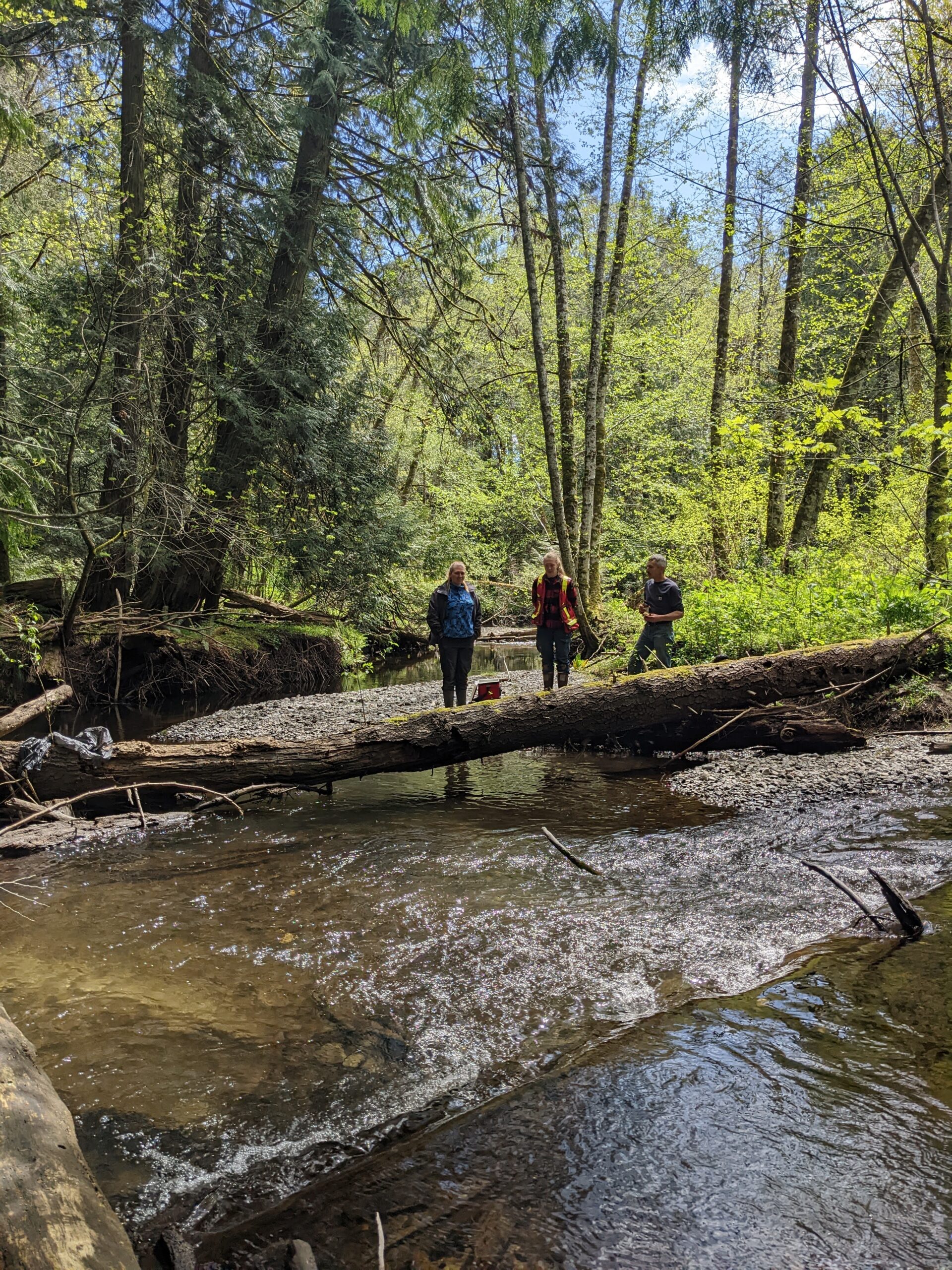Millstream Creek

The Millstream Watershed drains a 26 km² area, from the Gowlland Range in the Highlands, through Langford, Colwood, and View Royal, before emptying into Esquimalt Harbour. The watershed hosts a diverse landscape of rocky outcrops, hills, lowland lakes, wetlands, canyons, and waterfalls.
Millstream Creek was identified as potential habitat for coho salmon in the 1980s. Although the lower section of the creek was fairly polluted from surrounding urban development, the upper section was fed by small glacial lakes and bogs in a sparsely populated area. However, there were a number of waterfalls and other barriers preventing fish passage upstream. In 1993, Goldstream Hatchery received the necessary permitting to introduce the first juvenile coho salmon to Millstream Creek, and in the fall of 1995, spawning adults were seen gathering at the base of the first waterfall. Hatchery volunteers managed to trap 63 adult coho salmon and carry them over the falls to where they could spawn.
This method was used until 1998 when construction of the first fishway ('ladder') began. Over the next several years, and with considerable financial assistance from the City of Langford, Goldstream Hatchery volunteers were able to construct a total of 5 fishways in the lower section of Millstream Creek, downstream of Atkins Ave. Sources of effluent along the creek were cleaned up and more coho salmon from Goldstream Hatchery were introduced in the hopes of establishing a self-sustaining population. With technical support from Fisheries and Oceans Canada, a motion-detecting camera was installed at the first fishway to record the movement of adults upstream and juveniles downstream. As testimony to the success of this work, over 700 spawning adults returned to the 2.3 km lower section in 2016. Sea-run coastal cutthroat trout have also been observed using the fishways, taking advantage of habitat that was previously inaccessible to them.
However, an additional 7 km of high-quality habitat in the upper section of Millstream Creek remained blocked by a high culvert at Atkins Ave, near Mill Hill Regional Park in Langford.
Restoration Work
In 2016, we began to design and fundraise for a 6th fishway to eliminate the barrier to fish passage in Millstream Creek at the Atkins Ave culvert.
Completed in 2020, the fishway consists of a series of 13 step-pools at progressive heights, functioning like a ladder to help fish ascend the culvert. The culvert itself was relined with concrete to extend its life, and steel baffles were installed to aid fish movement by reducing velocity and providing resting places for fish. The fishway opened 7 km of previously inaccessible spawning and juvenile rearing habitat, and enables fish to move freely up and down Millstream Creek. In most cases, opening previously inaccessible habitat is 10 times more effective than restoring degraded habitat. We estimate that upwards of 3,000 more coho salmon could eventually return to spawn in Millstream Creek each year.
Continued maintenance of the fishways is necessary to ensure their long-term success. Each year in late summer, the fishways have to be cleared of gravel and debris in preparation for returning salmon, and the camera equipment has to be installed and tested. Footage of returning salmon is reviewed, and data on the type, gender, size, and condition of fish are recorded.
In 2022, PSS and volunteers from Goldstream Hatchery started a PIT (Passive Integrated Transponder) tagging program. A PIT tag is a small electronic microchip with a unique ID number that's inserted into the body cavity of a juvenile fish. When a tagged fish swims over an antenna array installed in the bed of the creek, the unique ID number is recorded, allowing us to estimate timing and survival of out-migrating smolts and returning adults. This data also helps inform where and when to release re-stocked coho salmon in the watershed. Tagged fish are released into Millstream Creek upstream of the Atkins Ave fishway.
Today, we continue to undertake various instream and riparian restoration projects throughout the Millstream Creek Watershed to improve habitat for fish and wildlife. Stream habitat assessments conducted by PSS staff and partners help us plan an inventory of restoration activities to mitigate threats and support and expand fish populations and overall ecological integrity.

BEFORE: This culvert was inaccessible to fish
AFTER: A new, salmon-friendly fishway
